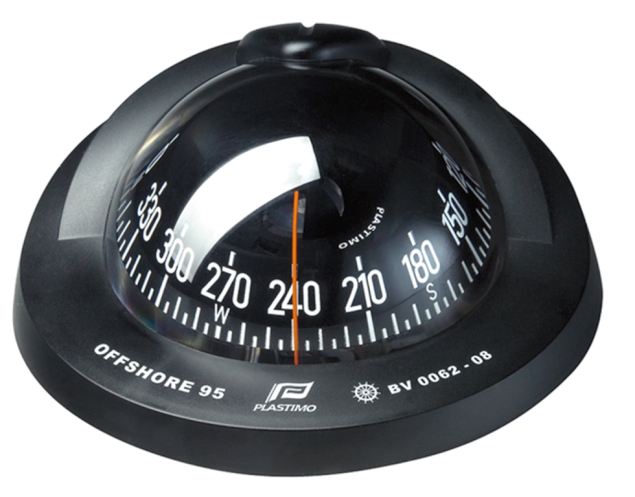
Each new season brings with it the task of maintaining and checking the safety equipment on board is in service and working correctly, whether that’s carried out by yourself or by a professional, you can’t get enough peace of mind while heading out in the bearing sea. We are trying to think of the not so obvious but important components to have checked to see its working correctly and the trusty compass is often one that is missed or left to deviate.
We all take for granted when buying a new or used vessel that the manufacturer or seller would have completed the compass swing and corrected the errors but this can change by the addition of extras fitted later on board, any electronics, stereo equipment, anything that could change the magnetic deviation. These errors will require the compass to be adjusted.
You can carry out a simply test to see if your helm compass is reading correctly:
- Use a hand held bearing compass.
- Remove all metal objects from your pockets and walk to the bow of the boat, not too far forward where you might be near the anchor.
- Have someone on the helm move and position the boat to the north using the helm compass.
- The helm will then shout the reading 000 degrees, then you take the same reading from your hand held compass and see if the two equate to the same reading or not.
- You then repeat the process for an East, South and West reading.
- If you are seeing differences, errors between the hand held and helm compass, then your helm compass will need to be swung by a compass adjuster, who will go through the same process but making adjustments to the screws and magnets inside the compass to correct the errors.
- The compass adjuster will also produce a deviation card, which is to be used for your course to steer calculations.
We rely heavily on our GPS chart plotters and autopilots which can also be out of deviation showing differences between our helm compass and autopilot reading.
An easy mistake and one we have seen before is an iron accidental being placed in a cupboard near to the electronic fluxgate compass, this could lead to a deviation of up to 30 degrees. The position of the electronic fluxgate compass is important but equally it is vital to carry out an autopilot calibration once a year so that we are reassured that the boat is indeed heading in the right direction.
If you are operating commercially it is a legal requirement to have the compass swung, checked for errors and a deviation card completed and present on board.
We can arrange on your behalf an autopilot calibration and compass check for errors, we would recommend if you have no knowledge of your compass or autopilot ever being calibrated that you contact a professional compass adjuster, stop by the office or call to discuss the best way forward if you have any doubts.
